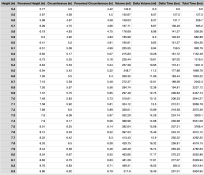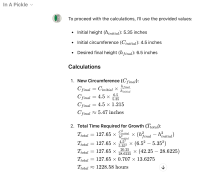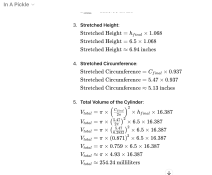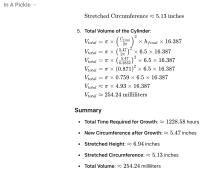- Joined
- Jan 27, 2024
- Messages
- 4
Used AI to do a meta analysis of every study found about traction. The goal was to figure out an accurate prediction of gains. This prediction model is based on traction of the glands with lower forces. (No taping required)
Summary: expect 1” of actual gain (kept even after you stop) from traction every 1270hr to 1650hrs+ depending on your present length (as you get longer it takes more time since it’s a volume change not simply a length change). Newbie gains and losses when not doing traction is the alignment/straightening of tissues fibres vs the reverse when not doing regular traction. This gain or loss is approximately 0.068 x length and the 1.8% circumference change in the opposite direction.
When doing traction Girth will increase eventually proportionally to existing the ratio of length to girth (circumference) of either starting measurements (before ever stretching) or ratio after consistent stretching.
For a typical guy starting at 5.5 inches can expect after 1270hrs to reach 6.9” yet when they stop for a long period of time will come back down to 6.5”. If their circumstances was 4.5” to start it would drop a little at the start of stretching when they get the. Newbie gains in length yet will grow proportionally to be 5.3” after the length comes back to 6.5”.
Ask me any questions you would like about how these calculations were made and what papers I used to feed gpt 4.0 to come up with the final results.
Summary: expect 1” of actual gain (kept even after you stop) from traction every 1270hr to 1650hrs+ depending on your present length (as you get longer it takes more time since it’s a volume change not simply a length change). Newbie gains and losses when not doing traction is the alignment/straightening of tissues fibres vs the reverse when not doing regular traction. This gain or loss is approximately 0.068 x length and the 1.8% circumference change in the opposite direction.
When doing traction Girth will increase eventually proportionally to existing the ratio of length to girth (circumference) of either starting measurements (before ever stretching) or ratio after consistent stretching.
For a typical guy starting at 5.5 inches can expect after 1270hrs to reach 6.9” yet when they stop for a long period of time will come back down to 6.5”. If their circumstances was 4.5” to start it would drop a little at the start of stretching when they get the. Newbie gains in length yet will grow proportionally to be 5.3” after the length comes back to 6.5”.
Ask me any questions you would like about how these calculations were made and what papers I used to feed gpt 4.0 to come up with the final results.




